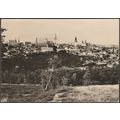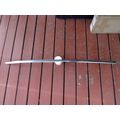Steyning, W Sussex - Brotherhood Hall - postcard by Morel c.1910s
- Condition : Used
- Dispatch : 2 Days
- Brand : None
- ID# : 180797998
- Quantity : 1 item
- Views : 211
- Location : United Kingdom

- Seller : justthebook (+1704)
- Barcode : None
- Start : Tue 14 May 2019 11:18:29 (EDT)
- Close : Run Until Sold
- Remain : Run Until Sold
Checks/Cheques
 for 1 item(s) edit
for 1 item(s) edit
Shipping Calculator
More Listings from This Seller view all
Seller's Description
- Postcard
- Picture / Image: Brotherhood Hall, Steyning (West Sussex)
- Publisher: P. W. Morel, London Road, Brighton
- Postally used: no
- Stamp: n/a
- Postmark(s): n/a
- Sent to: n/a
- Notes / condition:
This gained him a ship from Fécamp and, upon his victory at Hastings, he honoured his promise and returned it to the monks. However, its strategic importance made William place William de Braose in a new castle at nearby Bramber, who began a vigorous boundary dispute and power tussle with the monks, William's settlement having lacked definite terms in the first place. Domesday Book, completed in 1086, brought this to a head. It found that de Braose had built a bridge at Bramber and demanded tolls from ships travelling further along the river to the port at Steyning. The monks challenged Bramber's right to bury its parishioners in the churchyard at William de Braose's new church of St. Nicholas, and demanded its burial fees, despite it being built to serve the castle not the town. The monks produced forged documents to defend their position and were unhappy with the failure of their claim on Hastings[4] In 1086 the king called his sons, barons and bishops to court (the last time an English king presided personally, with his full court, to decide a matter of law) to settle this. It took a full day, and the Abbey won over the court, forcing de Braose to curtail his bridge tolls, give up various encroachments onto the abbey's lands[5] and organise a mass exhumation and transfer of all Bramber's dead to the churchyard of Saint Cuthman's Church in Steyning.
Even the 1086 judgment did not settle the Steyning versus Bramber dispute once and for all; it continued for centuries afterwards, exacerbated by the Lord of Bramber founding his own religious establishments in his neighbouring parish. Meanwhile, in the 14th century, the River Adur began to silt up and the town's use as a port became difficult leading to a loss of trade and population. The monks of Fécamp Abbey retained control of Steyning until the 15th century, and re-dedicated the church of St Cuthman to St Andrew in the 13th century.
Steyning began returning two Members of Parliament from 1278 and as a rotten borough made up of a depopulated port became similar to Dunwich until the Reform Act 1832.
Witnesses: Aymeri the vicomte; Richard fitzGilbert; Pons.[3]
Please ask if you need any other information and I will do the best I can to answer.
Image may be low res for illustrative purposes - if you need a higher definition image then please contact me and I may be able to send one. No cards have been trimmed (unless stated).
------------------------------------------------
Postage & Packing:
Postage and packing charge should be showing for your location (contact if not sure).
No additional charges for more than one postcard. You can buy as many postcards from me as you like and you will just pay the fee above once. Please wait for combined invoice. (If buying postcards with other things such as books, please contact or wait for invoice before paying).
Payment Methods:
UK - PayPal, Cheque (from UK bank) or postal order
Outside UK: PayPal ONLY (unless otherwise stated) please. NO non-UK currency checks or money orders (sorry).
NOTE: All postcards are sent in brand new stiffened envelopes which I have bought for the task. These are specially made to protect postcards and you may be able to re-use them. In addition there are other costs to sending so the above charge is not just for the stamp!
I will give a full refund if you are not fully satisfied with the postcard.
----------------------------------------------
Text from the free encyclopedia WIKIPEDIA may appear below to give a little background information (internal links may not work) :
*************
Steyning (/stɛnɪŋ/) is a small rural town and civil parish in the Horsham District of West Sussex, England. It is located at the north end of the River Adur gap in the South Downs, four miles (6.4 km) north of Shoreham-by-Sea. The smaller villages of Bramber and Upper Beeding constitute, with Steyning, a built-up area at this crossing-point of the river.
Steyning has existed since Anglo-Saxon times. Legend has it that St. Cuthman built a church, at one time dedicated to him, later to St Andrew, and now jointly to St Andrew and St Cuthman, where he stopped after carrying his mother in a wheelbarrow. Several of the signs that can be seen on entering Steyning bear an image of his feat. King Alfred the Great's father, Ethelwulf of Wessex, was originally buried in that church, before being transferred to Winchester - a Saxon grave slab (possibly his) remains in the church porch.
To thank his Norman protectors for refuge during his exile, Edward the Confessor granted his royal minster church in Steyning, with its large and wealthy manor lands, to the Abbey Church of the Holy Trinity at Fécamp, to take effect after the death of Aelfwine, the Bishop of Winchester, who had charge of Steyning. The bishop died in 1047 and ecclesiastical jurisdiction then passed directly to the Pope. (In the same way, Fécamp Abbey itself answered to no Norman bishop, only to the Pope.) This was confirmed in a charter by William. Confirming the gift of Steyning, made by Edward the Confessor, this charter acquitted the grantees of all earthly service and subjection to barons, princes and others, and gave them all royal liberties, custom and justice over all matters arising in their land, and threatened any who should infringe these liberties with an amercement of £100 of gold.[2] This was an addition to the nearby port with land around Rye, Winchelsea and Hastings, already given to the same Abbey by King Cnut, to honour a promise made by his wife Emma of Normandy's first husband King Aethelred. By then Steyning was already a thriving and important port with a market, a royal mint, the church founded by St Cuthman and one other church, as Domesday Book relates 60 years later. Godwin, Earl of Wessex expelled the Norman monks in 1052 and seized Steyning for himself, and his son Harolddecided to keep it upon his accession. This made commercial and strategic sense as Harold did not want a Norman toehold in a potential invasion port, but William responded by swearing on a knife before setting out for England to recover it for the monks:
Of the land of Steyning [county of Sussex]; the Duke gave seisin to the Church by the token of a knife, before he went to England; the grant to take effect if God should give him victory in England.
Listing Information
| Listing Type | Gallery Listing |
| Listing ID# | 180797998 |
| Start Time | Tue 14 May 2019 11:18:29 (EDT) |
| Close Time | Run Until Sold |
| Starting Bid | Fixed Price (no bidding) |
| Item Condition | Used |
| Bids | 0 |
| Views | 211 |
| Dispatch Time | 2 Days |
| Quantity | 1 |
| Location | United Kingdom |
| Auto Extend | No |




















